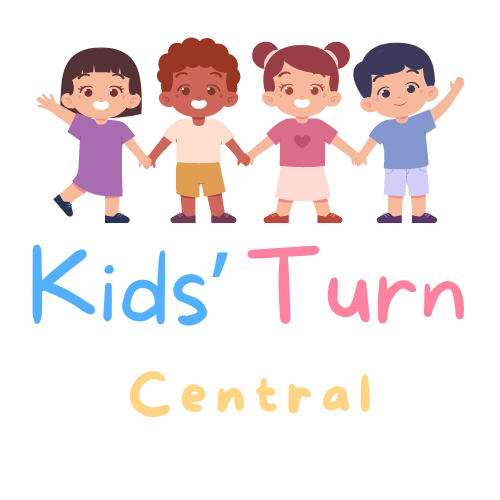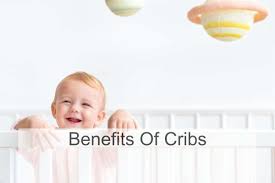Cribs are an essential piece of furniture for parents with newborns. As a new parent, I was overwhelmed with the number of choices available when it came to cribs. However, after doing some research, I discovered that cribs offer numerous benefits for both babies and parents.

Firstly, cribs provide a safe and secure sleeping environment for babies. According to Lambs & Ivy, one of the most important benefits of cribs is crib safety. Cribs are designed to meet safety standards and regulations, ensuring that babies are protected while they sleep. This gives parents peace of mind, knowing that their little ones are sleeping in a safe environment.
Secondly, cribs offer a comfortable sleeping space for babies. Cribs come in various sizes and shapes, allowing parents to choose the best fit for their baby’s needs. Additionally, cribs can be customized with different types of mattresses, sheets, and blankets, ensuring that babies are comfortable while they sleep. With a comfortable sleeping space, babies are more likely to sleep soundly, which is beneficial for their overall health and development.
Safety and Security

As a parent, safety is always a top priority. Cribs offer a secure and safe sleep environment for babies. Here are a few ways that cribs provide safety and security for your little one.
Preventing Falls
One of the most important safety features of a crib is its ability to prevent falls. The high sides of the crib keep your baby safely contained, reducing the risk of falls. Additionally, many cribs come with adjustable mattress heights, allowing you to lower the mattress as your baby grows and becomes more mobile.
Contained Sleep Environment
Cribs provide a contained sleep environment for babies, which can help reduce the risk of Sudden Infant Death Syndrome (SIDS). According to the American Academy of Pediatrics, babies should always be placed on their backs to sleep, on a firm and flat surface, in a crib that meets current safety standards. This helps to create a safe sleep environment that reduces the risk of suffocation.
Standards and Regulations
Cribs are subject to strict safety standards and regulations to ensure they provide a safe sleep environment for babies. For example, the Consumer Product Safety Commission (CPSC) sets safety standards for cribs, including the distance between slats, the depth of the mattress, and the strength of the crib’s structure. When purchasing a crib, be sure to look for one that meets current safety standards to ensure your baby’s safety and security.
Comfort and Sleep Quality

As a parent, I know how important it is to ensure that my baby gets a good night’s sleep. And that’s where cribs come in – they provide a comfortable and safe place for babies to rest. In this section, I’ll discuss two key aspects of comfort and sleep quality that cribs provide: a supportive mattress and a cozy sleep space.
Supportive Mattress
One of the most important features of a crib is the mattress. A firm and flat mattress is essential for preventing Sudden Infant Death Syndrome (SIDS), which is a leading cause of death in infants. Cribs are designed to provide just the right amount of support to keep babies safe and comfortable while they sleep.
In addition to preventing SIDS, a supportive mattress also helps ensure that babies get the restful sleep they need to grow and develop properly. By providing a firm and flat surface, cribs help keep babies in a comfortable position throughout the night, reducing the risk of discomfort or injury.
Cozy Sleep Space
Another important aspect of comfort and sleep quality is the sleep environment itself. Cribs provide a cozy and peaceful space for babies to sleep, free from distractions and disturbances. By creating a dedicated sleep space for your little one, you can help them establish healthy sleep habits from an early age.
When setting up your baby’s crib, it’s important to create a safe sleep environment. This means ensuring that the crib is free from any loose bedding, toys, or other items that could pose a suffocation or choking hazard. By following these guidelines, you can create a cozy and safe sleep space that will help your baby get the restful sleep they need to thrive.
Convenience Features

As a parent, I understand the importance of convenience when it comes to taking care of a baby. That’s why cribs come with various convenience features that make your life easier.
Adjustable Mattress Heights
One of the most useful features of a crib is the ability to adjust the mattress height. This feature allows you to raise or lower the mattress to a comfortable height for you to reach your baby. When your baby is a newborn, you can set the mattress to the highest level, making it easier for you to lift them in and out of the crib. As your baby grows, you can lower the mattress to prevent them from climbing out of the crib.
Portability Options
Cribs come in different sizes and shapes, and some of them have wheels, making them easy to move from one room to another. This feature allows you to keep your baby close to you while you go about your daily routine. If you need to move the crib outside, you can easily roll it to your desired location.
Storage Solutions
Another convenience feature of cribs is the storage solutions they offer. Some cribs come with drawers or shelves attached to the sides, allowing you to store your baby’s essentials like diapers, wipes, and clothes. This feature saves you time and energy by keeping everything you need within reach.
Design and Aesthetics

As a parent, I know how important it is to create a beautiful and safe space for your baby to sleep and play in. Cribs offer a variety of styles and customization options to fit any nursery decor.
Variety of Styles
Cribs come in a range of styles, from traditional to modern, and everything in between. Some popular styles include:
- Sleigh cribs: These cribs have a curved headboard and footboard, giving them a classic and elegant look.
- Convertible cribs: These cribs can be converted into a toddler bed, daybed, or even a full-size bed, making them a versatile and long-lasting option.
- Round cribs: These cribs have a unique shape that adds a touch of whimsy to any room.
- Minimalist cribs: These cribs have a simple and sleek design, perfect for those who prefer a more modern aesthetic.
No matter your style preference, there is a crib out there that will fit your needs.
Customization Options
Many cribs also offer customization options, allowing you to create a truly unique piece for your nursery. Some customization options include:
- Color: Many cribs come in a variety of colors, from classic white to bold and bright hues.
- Materials: Cribs can be made from a range of materials, including wood, metal, and even acrylic.
- Accessories: Some cribs come with built-in storage or even a changing table, making them a practical and convenient choice.
Longevity and Versatility
As a parent, I know that investing in a crib is a big decision. One of the most important factors to consider is the longevity and versatility of the crib. In this section, I will discuss two key aspects of cribs that contribute to their longevity and versatility: convertible cribs and durable materials.
Convertible Cribs
Convertible cribs are a popular choice among parents because they can be converted into different types of beds as your child grows. For example, a convertible crib can be transformed into a toddler bed, daybed, or even a full-size bed with the right conversion kit. This means that you can use the same piece of furniture for several years, saving you money in the long run.
Another advantage of convertible cribs is that they are versatile. You can adjust the height of the mattress to accommodate your growing baby, and some models even come with built-in storage for diapers, wipes, and other baby essentials. Convertible cribs are available in a variety of styles and finishes, so you can find one that matches your nursery décor.
Durable Materials
The durability of a crib is another important factor to consider. You want a crib that will last for several years without showing signs of wear and tear. One way to ensure durability is to choose a crib made from high-quality materials. Solid wood cribs are a popular choice because they are sturdy and long-lasting. Metal cribs are also durable and can add a modern touch to your nursery.
Another consideration when it comes to durability is the finish of the crib. A non-toxic finish will ensure that the crib is safe for your baby and will not chip or peel over time. Look for cribs with a multi-step finish process, which will provide extra protection against scratches and dings.
Health and Wellbeing
As a parent, I want my baby to be healthy and happy. That’s why I believe that cribs are essential for my baby’s health and wellbeing. Cribs provide a safe and comfortable sleeping environment for my baby, which promotes healthy spine development and reduces the risk of Sudden Infant Death Syndrome (SIDS).
Non-toxic Materials
When choosing a crib, I always make sure to look for one made with non-toxic materials. This is important because babies spend a lot of time sleeping, and I want to make sure that my baby is not exposed to harmful chemicals. Some of the materials I look for include solid wood, metal, and non-toxic finishes.
Promotes Independent Sleep
Cribs also promote independent sleep, which is important for my baby’s development. When my baby sleeps in a crib, they learn to self-soothe and fall asleep on their own. This is an important skill that will help my baby sleep through the night and eventually transition to a toddler bed.

